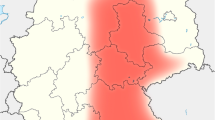Summary
Borna disease virus (BDV) is a neurotropic agent with capacity to infect and cause neurological disease in a broad range of warmblooded hosts including horses, sheep, cattle, cats, and possibly also humans. The epidemiology of BDV is largely unknown. However, it is likely that subclinically infected animals may represent potential virus reservoirs. In two groups of Swedish racing horses, one clinically healthy and one consisting of horses with diffuse neurological signs, the BDV seroprevalence was 24.5% and 57.7%, respectively. BDV RNA was detected in peripheral blood mononuclear cells in 8 out of 28 (28.6%) investigated horses, the majority of the BDV RNA-positive horses belonging to the group with neurological signs. There was a close relationship between the Swedish equine BDV isolates and previously reported equine BDVs in Europe. Our results point to an association of BDV infection with atypical disease patterns in horses such as diffuse mental and gait disturbances. These findings may be of importance for the understanding of the epidemiology of BDV infections in animals and man.
Similar content being viewed by others
Author information
Authors and Affiliations
Additional information
Accepted September 4, 1998 Received May 27, 1998
Rights and permissions
About this article
Cite this article
Berg, AL., Dörries, R. & Berg, M. Borna disease virus infection in racing horses with behavioral and movement disorders. Arch. Virol. 144, 547–559 (1999). https://doi.org/10.1007/s007050050524
Published:
Issue Date:
DOI: https://doi.org/10.1007/s007050050524




